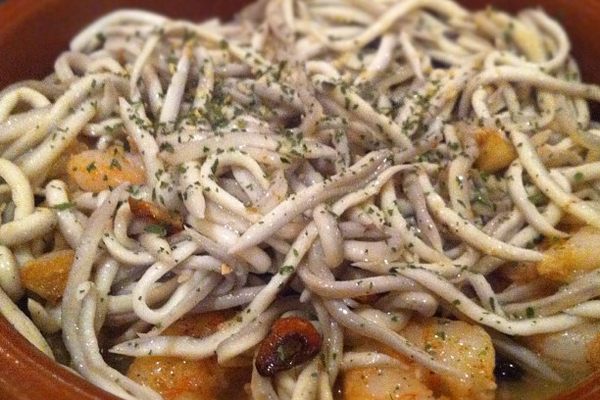The size and color of a ping-pong ball, the rare frutilla blanca grows only in about two-dozen gardens in the steep forested slopes of the Nahuelbuta Range. It has a sugary flavor and pineapple-like fragrance that makes it entirely distinct from a standard strawberry. It also happens to be an ancestor of garden-variety strawberries.
Chile’s Indigenous Mapuche were the first to cultivate these pale white berries, which they call kelleñ. In addition to eating them raw, the Mapuche dried them like raisins, prepared them in fermented chicha, and used them for traditional medicines. They also planted the white strawberries as traps to ambush Spanish conquistadors, who became so enchanted with them that they transported the fruit to fields as far away as Peru and Colombia.
In 1714, a French spy named Amedée François Frézier carried five white strawberries back to Europe. Three decades later, in Brittany, farmers crossed their offspring with the Virginia strawberry (Fragaria virginiana) of eastern North America to create the garden strawberry (Fragaria × ananassa) we all know today.
In a cruel twist of fate, the garden strawberry arrived in Chile in 1830 and, over the decades, came to dominate local fields, nearly wiping out a crop that had grown there for centuries.
Today the white strawberry is found only in the Chilean towns of Contulmo and Purén, where it’s such a rare delicacy that a kilo goes for 22,000 Chilean pesos ($25). Even in these two towns, you can only purchase white strawberries during their short five-week harvest period between December and January. But their scarcity calls for celebration: During the harvest, Contulmo and Purén host elaborate food festivals, placing white strawberries in kuchen cakes, preserves, and a sangria-like aperitif called clery.
The plight of the frutilla blanca has also produced champions devoted to its survival. Jairo Carvajal, a young university-educated agronomist from Purén, comes from a family of white-strawberry farmers. “We need to make more people aware of it so that our tradition of cultivation isn’t lost,” he explains of his efforts to promote the fruit and explore innovative growing techniques. “Aside from being a native species, this is also something that’s very important for global conservation.”
Lovers of Chile’s frutilla blanca hope that strawberries can one day go through a process similar to that of modern grocery store apples, which went through a long phase dominated by a few ultra-red varieties before a smorgasbord of alternatives and their colorful green and golden cousins helped diversify the market. Carvajal even argues that the sweet flavor of the white strawberry is far superior to that of the red one. The rest of the world, he says, just doesn’t know what it’s missing.
Where to Try It
-
Chile’s forager-in-chief, Rodolfo Guzmán, has a sweet spot for white strawberries and uses them, in season, for dishes such as tres leches y tres frutillas at his minimalist Santiago restaurant.
-
La Ruta de la Frutilla Blanca Website
Purén, ChileThis “White Strawberry Route” between the towns of Purén and Contulmo is your best bet to try fresh strawberries during the months of December and January, when they are sold by the kilo, in jams or in the alcoholic drink clery.
Written By
 Mark Johanson
Mark Johanson
Sources
- www.fondazioneslowfood.com/en/slow-food-presidia/puren-white-strawberry/
- www.britannica.com/plant/strawberry
- www.departures.com/lifestyle/food/white-strawberries-pur%C3%A9n-and-nine-other-discoveries-obsessive-gourmet
- eatingchile.blogspot.com/2009/11/chilean-strawberries.html
- newspuren.blogspot.com/2005/12/puren-y-orgullo-de-su-frutilla-blanca.html
- www.atlasobscura.com/articles/white-strawberry
- www.atlasobscura.com/articles/big-strawberries-spy-chile-france













